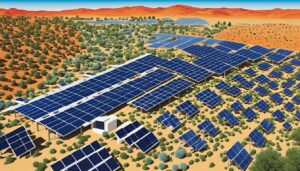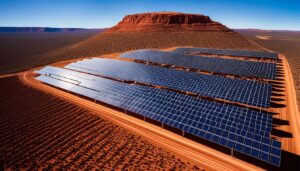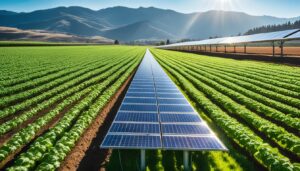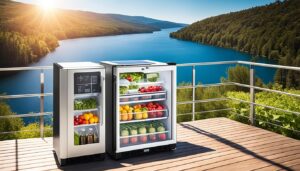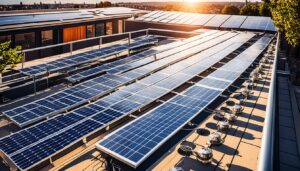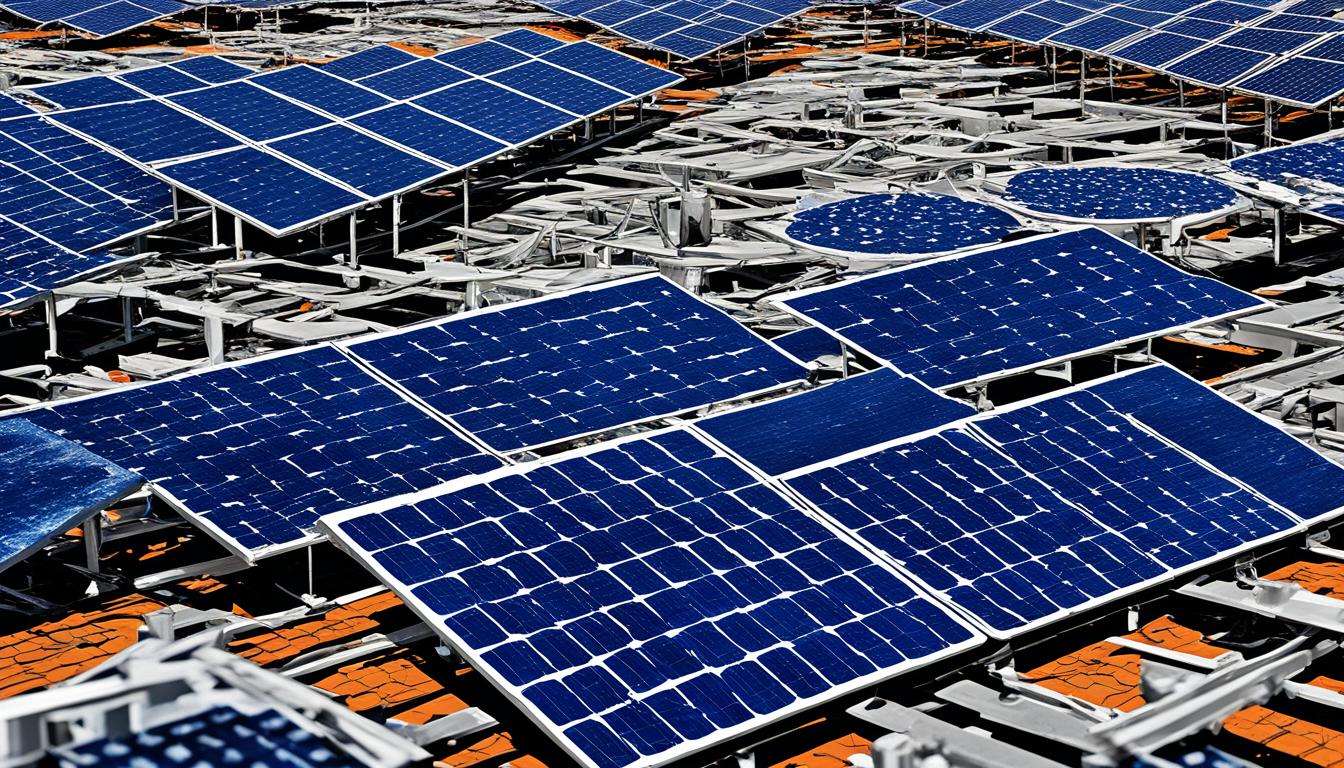
In the ever-evolving solar industry, unforeseen challenges can have far-reaching implications. The recent bankruptcy of Fimer, a prominent player in the solar sector, has sent shockwaves throughout the industry, affecting businesses and individuals alike. This pivotal shift demands a thorough understanding of the implications and careful navigation of the changing landscape.
Key Takeaways:
- The bankruptcy of Fimer has sparked a pivotal shift in the solar industry.
- Affected parties must be aware of the potential impact on solar panel and system prices.
- Consideration should be given to warranty support and experienced installers.
- Navigating the Fimer bankruptcy requires informed decision-making.
- Staying updated on industry developments is crucial for adapting to the changing landscape.
Understanding the Impact on Solar Panel and System Prices
Recent data from energy industry analyst SunWiz reveals a decline in solar panel and system prices in the past few months. However, despite this decline, consumer spending on rooftop solar installations has remained steady. In fact, households are opting for larger systems to combat rising electricity prices.
On average, the investment in a rooftop solar system is around $9,000. Furthermore, the average system size has increased to almost 10.5 kW. This trend of investing in larger systems has led to the average size of a rooftop solar system crossing the 10 kW threshold for the first time.
Take a look at the table below to see the average investment and system size over the past year:
| Year | Average Investment | Average System Size |
|---|---|---|
| 2020 | $8,000 | 9.2 kW |
| 2021 | $9,000 | 10.5 kW |
This increase in system size showcases the growing demand for larger systems as consumers seek to maximize the benefits of their investment in solar energy. By investing in larger systems, households can generate more renewable energy and potentially achieve greater savings on their electricity bills.
The impact of the Fimer bankruptcy on solar panel and system prices is a significant consideration for individuals looking to install solar systems. Understanding these price dynamics can help consumers make informed decisions based on their specific needs and budget.
H3: Consumer Spending on Larger Systems
Despite the decline in solar panel and system prices, consumer spending on rooftop solar installations has remained steady. This can be attributed to the fact that households are now opting for larger systems to combat rising electricity prices.
“Investing in a larger rooftop solar system allows me to generate more renewable energy and offset a larger portion of my electricity consumption. With the rising cost of electricity, it’s a smart long-term investment.”
By going for larger systems, consumers are able to maximize the benefits of solar energy, potentially reducing their reliance on grid electricity and achieving greater energy independence.
Navigating the Fimer Bankruptcy: Key Considerations
In light of the Fimer bankruptcy, there are several key considerations for individuals and businesses in the solar industry.
Firstly, it is important to understand the payback period for rooftop solar investments. Most installations are expected to pay for themselves in less than five years, making solar a financially viable option in the long run.
However, it is crucial to consider the warranty support provided by manufacturers. This is especially important in light of the challenges faced by some battery manufacturers during the trial. By choosing reputable brands with a proven track record, individuals and businesses can ensure that they receive reliable warranty support and have peace of mind regarding their solar investments.
Professional installation by experienced solar battery installers is also essential. With a complex system like a solar battery, proper installation is crucial for optimal performance and longevity. By working with experienced installers, individuals and businesses can avoid potential issues and ensure that their solar systems are set up correctly.
Considering these key factors – payback period, warranty support, major brands, and experienced installers – is essential for navigating the Fimer bankruptcy and making informed decisions about solar investments. Now, let’s explore some examples of major brands in the solar industry:
| Brand | Specialty |
|---|---|
| SunPower | High-efficiency solar panels |
| LG Solar | Reliable and efficient solar panels |
| SolarEdge | Innovative solar inverters and power optimizers |
| Enphase Energy | Microinverters for improved system performance |
These major brands have a strong presence in the market and are known for their quality products and excellent customer support. By choosing brands like these, individuals and businesses can ensure that they have the necessary warranty support and access to maintenance and repairs if needed.
Overall, navigating the Fimer bankruptcy requires careful consideration of the payback period, warranty support, major brands, and experienced installers. By making informed decisions based on these key factors, individuals and businesses can confidently navigate the changing landscape of the solar industry.
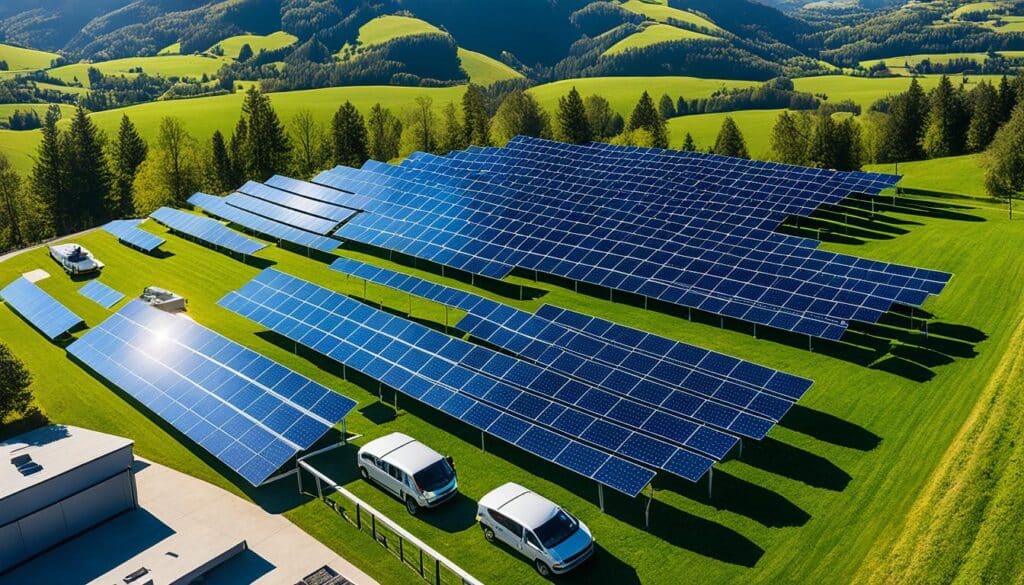
Conclusion
The Fimer bankruptcy has had a profound impact on the solar industry, leading to significant changes in solar panel and system prices, as well as the availability of certain products and support. It is imperative for individuals and businesses in the industry to fully comprehend the implications of this bankruptcy and take decisive actions to navigate through this challenging period. By staying well-informed and considering pivotal factors such as payback period, warranty support, and the expertise of installers, stakeholders can make informed decisions and adapt to the shifting landscape of the solar industry.
The bankruptcy of Fimer has introduced a pivotal shift in the solar industry, affecting not only the prices of solar panels and systems but also the availability of specific products and support. These changes create a dynamic environment that requires careful consideration and strategic planning for both existing and potential participants in the solar market. It is essential to monitor market trends, seek advice from industry experts, and evaluate the financial viability of solar investments in light of the Fimer bankruptcy. Additionally, individuals and businesses should prioritize working with trusted and experienced solar installers to ensure the highest quality installations.
As the solar industry continues to evolve, the implications of the Fimer bankruptcy continue to be felt by all stakeholders. It is crucial for individuals and businesses to proactively adapt and adjust their strategies to thrive in this new landscape. By closely monitoring industry developments and staying informed about the implications of the bankruptcy, stakeholders can make the necessary adjustments to mitigate risks and capitalize on emerging opportunities. The Fimer bankruptcy has presented challenges, but through careful planning and prudent decision-making, the solar industry can emerge stronger and more resilient.
FAQ
What are the implications of the Fimer bankruptcy for the solar industry?
The bankruptcy of Fimer has significant implications for both businesses and individuals involved in the solar sector. This bankruptcy will result in a pivotal shift in the industry, impacting solar panel and system prices, as well as the availability of certain products and support.
How will the Fimer bankruptcy affect solar panel and system prices?
The Fimer bankruptcy is expected to impact solar panel and system prices. While prices have been declining in recent months, the bankruptcy may further influence these prices. It is essential for individuals considering solar installations to understand the impact of the bankruptcy on panel and system prices and make informed decisions based on their specific needs and budget.
What are the key considerations for individuals and businesses in the solar industry during the Fimer bankruptcy?
During the Fimer bankruptcy, there are several key considerations for individuals and businesses in the solar industry. It is important to understand the payback period for rooftop solar investments and consider the warranty support provided by manufacturers. It is advisable to stick with major brands that have a proven track record and are likely to provide good warranty support. Additionally, professional installation by experienced solar battery installers is essential for optimal performance of the battery system.
How can individuals and businesses navigate the Fimer bankruptcy in the solar industry?
To navigate the Fimer bankruptcy in the solar industry, it is crucial to stay informed about the implications and impacts of the bankruptcy. By considering key factors such as payback period, warranty support, and experienced installers, individuals and businesses can make informed decisions and adapt to the changing landscape of the solar industry.

